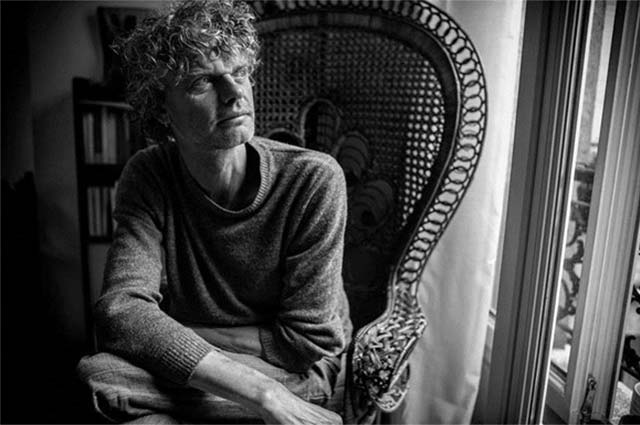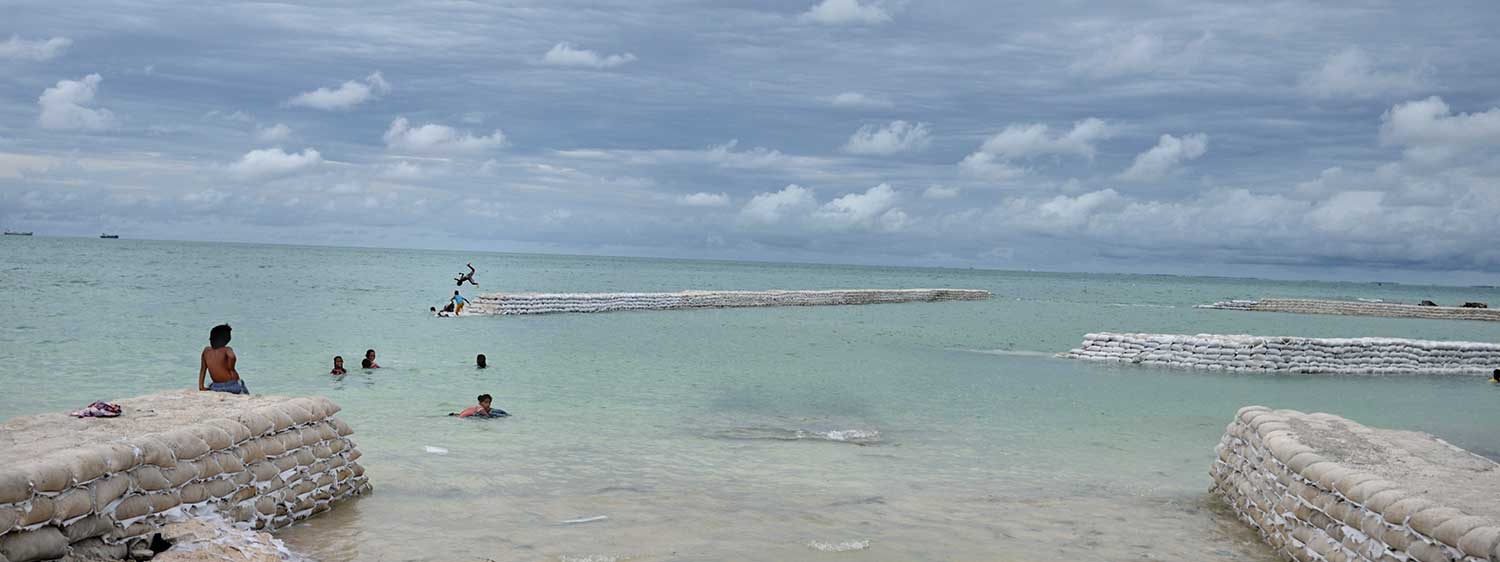
My view is that you should never repeat an idea or a story that has already been done, unless you are 100% sure that you can do it better and find a unique angle or approach.
About the Special Project
Travelling to six major cities, including Jakarta, Tokyo and Sao Paulo, Kadir is documenting the ways countries handle their waste disposal. Environmental issues have been close to Kadir’s heart for many years. Nikon is proud to support his continued exploration of this important topic.
Q: WHAT INSPIRED YOU TO FOCUS ON THE GLOBAL WASTE PROBLEM FOR YOUR NIKON SPECIAL PROJECT?
When I was working on a previous project of mine, which looked at the impact of climate change and specifically rising sea levels, I was extremely concerned by the amount of waste that I saw on small islands and beaches. It made me want to take action.
Nowadays, our global understanding of waste is limited to putting it in bags on the street for collection, but never thinking about the journey it takes afterwards, and the amount of work and effort that goes in to disposing of it. I was interested to track what happens to our waste, to investigate how it’s managed, mismanaged or whether it’s managed at all.
Q: WHY DO YOU THINK THERE IS SUCH A LACK OF CONCERN AROUND WASTE GLOBALLY?
We don’t tend to question what happens to the garbage and waste we deal with. Almost all the stuff we throw away could be re-used and recycled, and if you look at the sheer volume we produce, especially in Western societies, it’s frightening.
In some of the cities I’ve visited, there is no space left to handle this waste. In places like New York, the landfill sites are full - they need to export it. This is also an issue in Jakarta, which literally has no more space to manage the waste it produces and is still trying to feed into the biggest landfill site in the world. Whereas in Tokyo, the largest city in the world, they recycle pretty much everything; we can learn from that.
Q: WHY DID YOU PICK THESE COUNTRIES SPECIFICALLY?
The important element of this project was capturing a global perspective of the problem of waste. So, Jakarta and Tokyo in Asia, Sao Paulo and New York in the Americas, Lagos in Africa, and Amsterdam in Europe.
Seeing how it varies from country to country and continent to continent is fascinating and telling. Plus, it helps create a complete story. New York, for example, produces the most waste out of any other city in the world – twice as much as the second most wasteful city, Mexico City. Yet it shows no concern for its own consumption, and has resulted to exporting its waste to be managed elsewhere. Japan, on the other hand, is extremely good at reusing the very limited resources they have, and is in many ways a true example to other cities about how to manage waste properly.
Having this range was the only way to get a balance between identifying the challenge and attempting to showcase a solution, to get people really thinking twice about waste.
Q: WHAT WERE THE MAJOR CHALLENGES YOU ENCOUNTERED ALONG THE WAY?
Access - I often had to work with companies and convince them to give me access to the waste and see how it’s processed. This quickly became difficult, especially if that company wasn’t succeeding to manage its waste properly. New York was quite difficult from this perspective, because its waste management is all privatised and there are many different organisations involved that need to give you access. Luckily, in every city, I had a good local fixer / producer who could help me with this.
Another challenge was to find the right balance visually. Waste is waste, and in most cases, it looks the same wherever it is. So, how do I deliver the message of my project while also keeping all the images interesting and varied? This required a lot of thought. I am confident I managed to achieve it thanks to the different personalities of each city and its people.
Q: HOW DO YOU RESEARCH FOR PROJECTS LIKE THIS?
Before I embark on a project, I force myself to write down my purpose; what I want to tell, my messages and outputs. Plus, for this project I had to carefully consider which cities I was going to visit, and how I would travel around them. It took at least six months of research before I could start shooting, along with making sure I had a local fixer in each city who could help me travel around safely and confidently.
Q: WHAT FACTORS AFFECTED YOUR CHOICE OF EQUIPMENT?
Reliability – Nikon equipment has never failed me. The conditions were quite hard, especially with the intense humidity of places like Jakarta; I needed my camera bodies and lenses to hold out.
I also needed to be discreet. I don’t carry much equipment with me – usually two camera bodies and three lenses. This helped me blend into the background, without walking around a waste site in Lagos, for example, carrying a mass of professional looking gear.
The D810 is my preferred camera; it has fantastic video capabilities and the 36MP also means the quality of image is unrivalled. The Df is also useful given how lightweight and transportable it is. Regarding lenses, I used the AF-S Zoom-Nikkor 17-35mm f/2.8D IF-ED , AF-S NIKKOR 35mm f/1.4G and the AF Nikkor 50mm f/1.8D.
Q: WHAT WAS THE MOST MEMORABLE/ IMPACTFUL MOMENT OF THE TRIP?
It was when I was in Lagos. Apart from the fact I love the city, it surprised me that the landfill was relatively well-organised. Without the communities at the landfill separating out the varied materials, the somewhat apocalyptic city would have drowned in its own waste a long time ago.
I think many of us read about the waste issues across the globe but, when you see it through the right imagery, you get a real sense of the scale of the problem.
Q: WHAT ADVICE DO YOU HAVE FOR PHOTOGRAPHERS?
My main piece of advice is to stay curious – if you lose your inquisitiveness, you will struggle to keep your work fresh and exciting.
I also think it’s vital to have a passion for travel and know where you’ll need support. I was lucky enough to visit some of the world’s most interesting cities, but would not have been able to do so if I didn’t have the help of the right local people along the way. In my opinion, that’s just as important as having the right kit.
Q: WHAT DOES IT MEAN TO YOU TO BE ABLE TO BE A NIKON AMBASSADOR AND WORK ON A PROJECT SUCH AS THIS?
To be able to share my knowledge and passion for photography with younger generations is a real honour – and to do this with Nikon’s help and support is a privilege. Its equipment has been with me every step of my career.
For this project, I hope that raising awareness of the issue of waste and how it is managed will encourage people to think twice and carefully consider how they dispose of their rubbish. We need to recognise the wider impact our actions have for the future of our planet.
















 Contact Us
Contact Us